Turning Power Plants into Public Art
What if artists could use their know-how to engage in a practice that actually brings about real change?
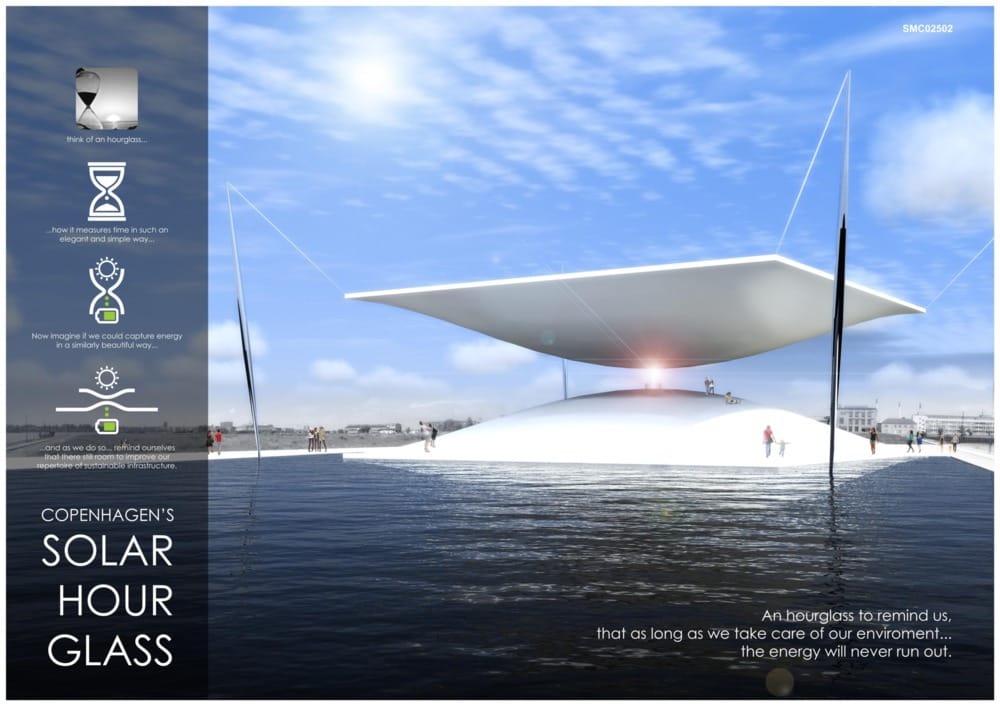
There is no shortage of art critiquing humankind’s abuse of the earth today. While these works help illuminate the problem, they don’t actually solve it. But what if artists could use their know-how to engage in a practice that actually brings about real change?
That’s the theoretical question behind the Land Art Generator Initiative (LAGI), a group that hopes to crack 21st-century energy challenges by encouraging collaboration between artists and architects, scientists and engineers. On its website, LAGI states one of the simplest problems facing renewable energy today is the fact most residents don’t want an ugly (albeit sustainable) power plant within view of their homes. Founding Co-Directors Elizabeth Monoian and Robert Ferry explained in a 2010 essay on the subject:
[We] may be wise to question the ability of advances in renewable energy technologies to reach their greatest potential if their physical forms continue to exist entirely outside of aesthetic and cultural considerations. This question is reinforced by the fact that the process of harnessing renewable resources such as the sun and the wind often requires that energy generation facilities be located in more visible locations.
To tackle this challenge, LAGI throws a biennial design contest that invites interdisciplinary teams to submit workable designs for “public art installations” doubling as eco-friendly power plants. This year, participants were tasked with creating a design for Refshaleøen, a former shipyard in Copenhagen now experiencing urban regeneration. Three hundred proposals from 55 countries were submitted, and LAGI announced the winners last Friday. Here are some of the proposed designs.
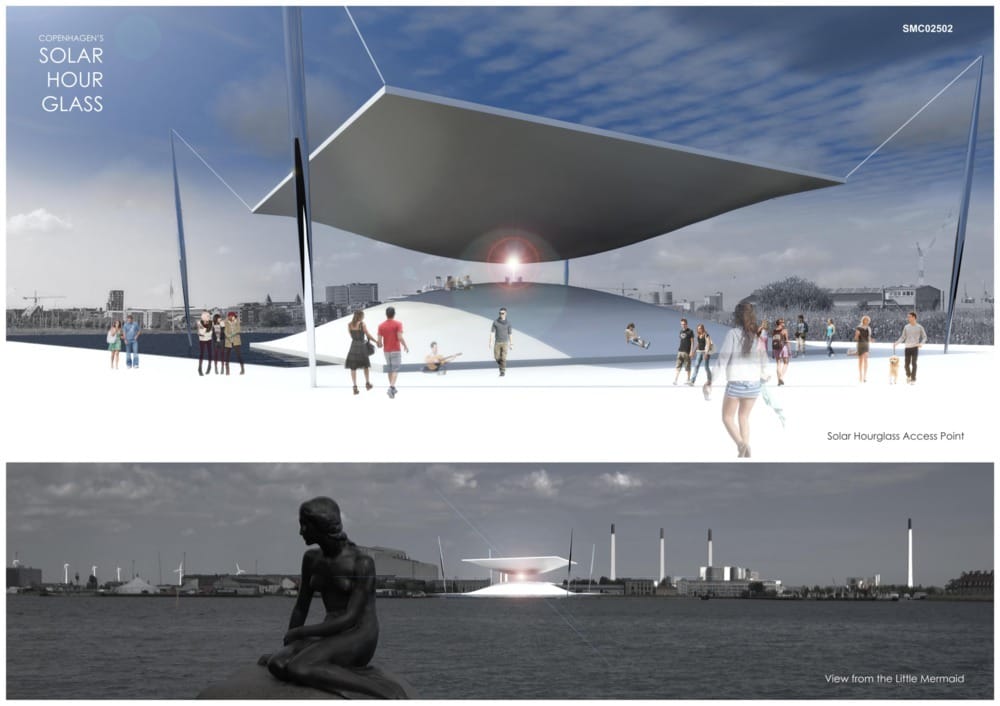
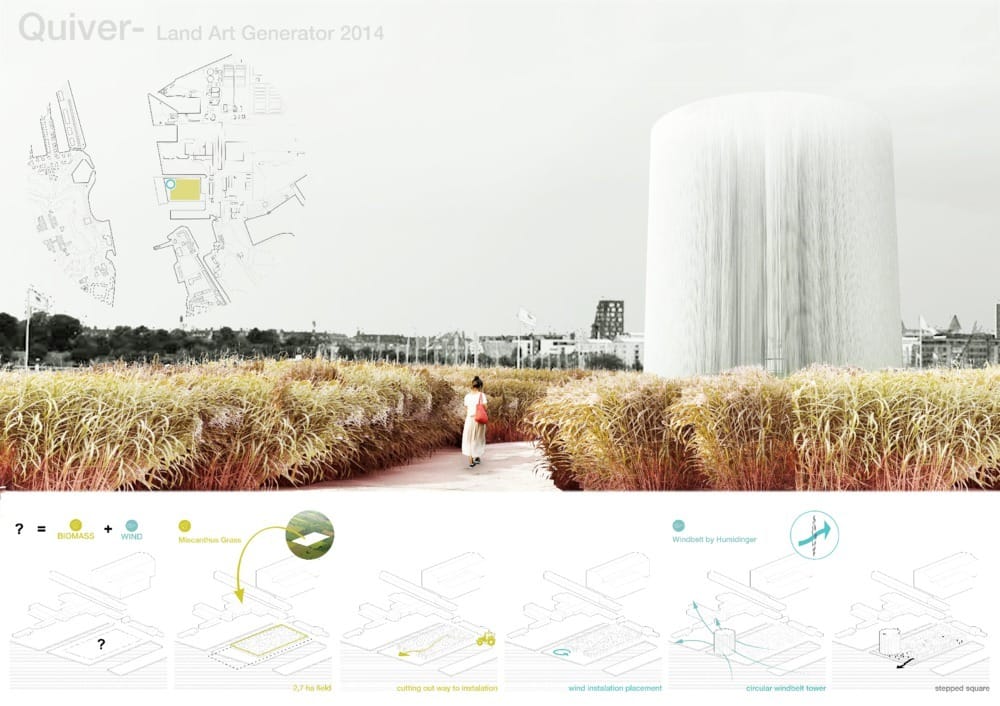
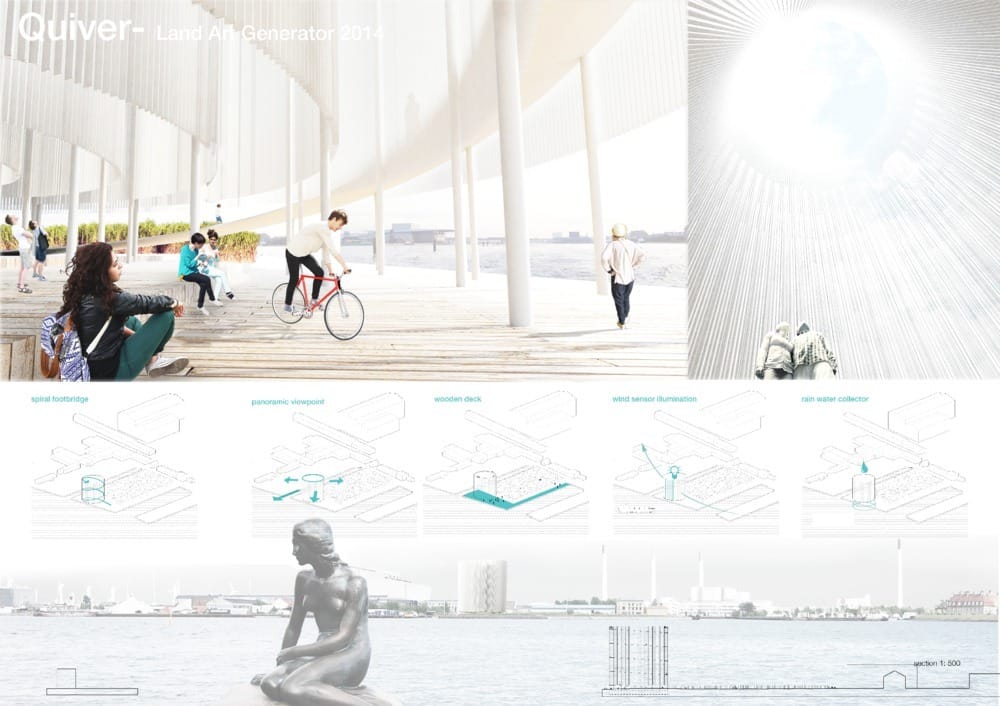
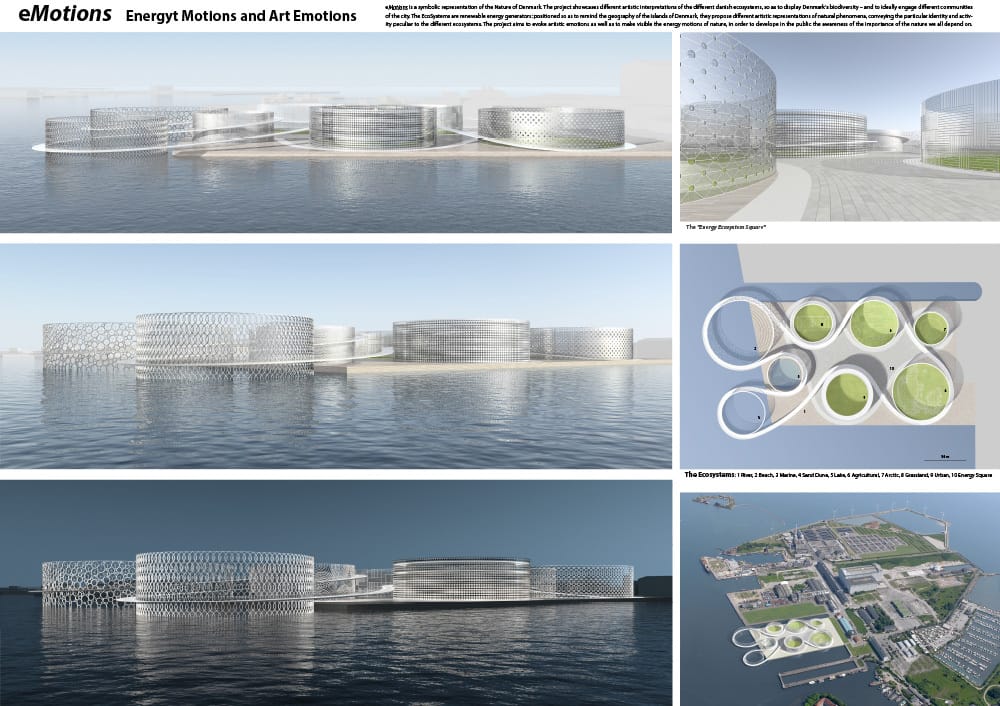
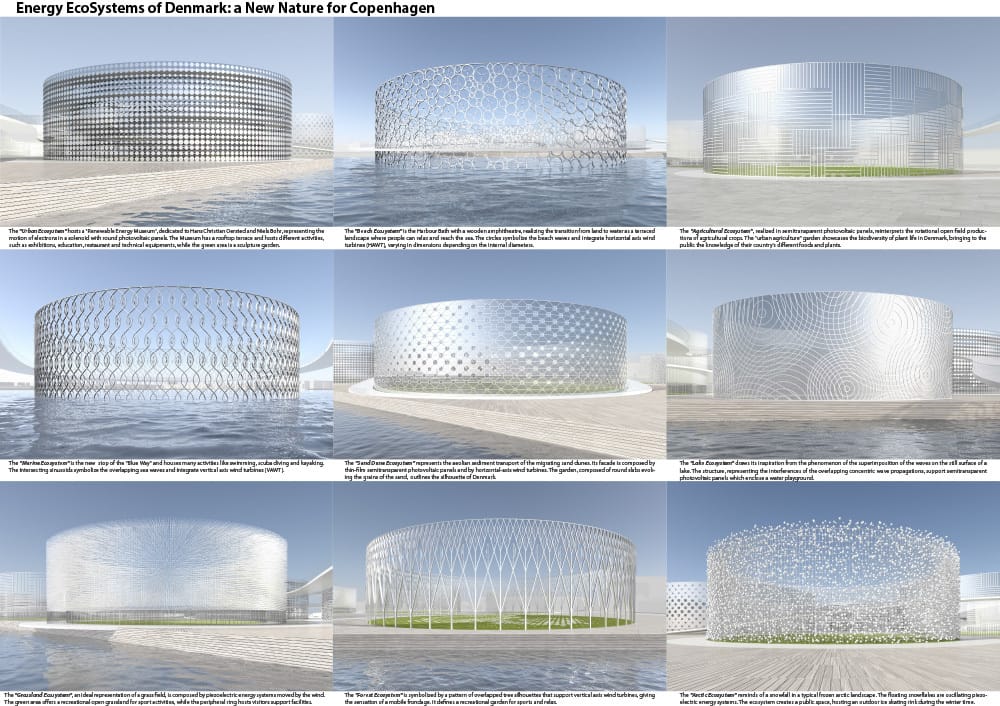
h/t Arch Daily




